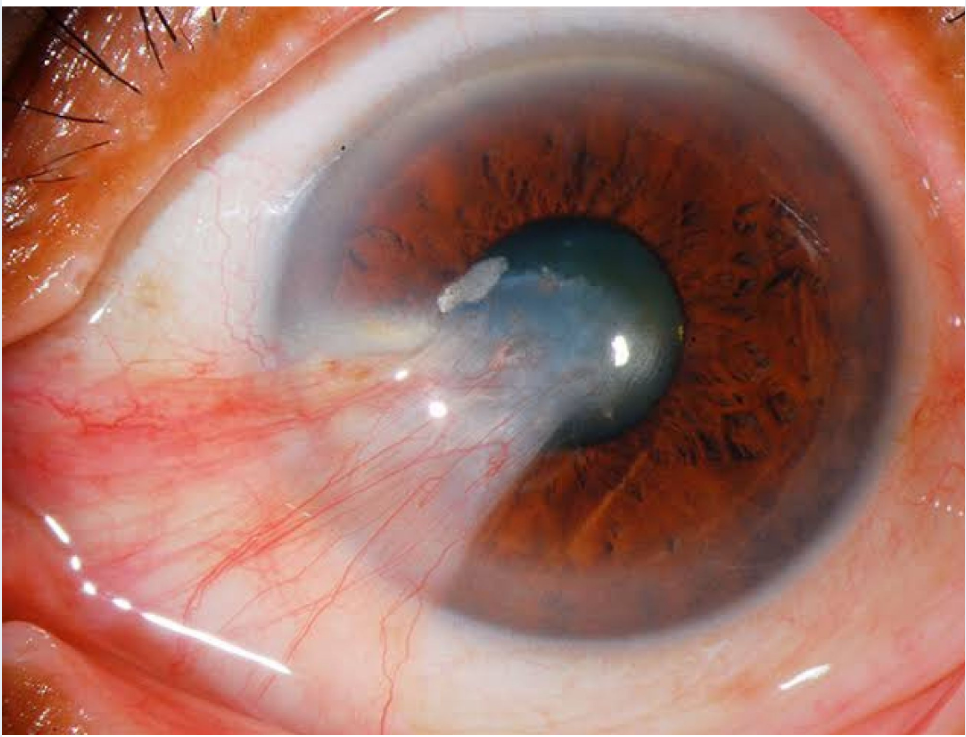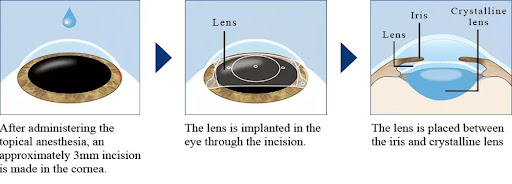Pterygium is a common ocular surface condition characterized by a benign, wedge-shaped tissue growth over the conjunctiva—the transparent membrane covering the eye’s white part. This tissue growth usually begins on the inner corner of the eye and progresses toward the cornea. Without immediate intervention, pterygium can potentially grow, causing discomfort and affecting vision.
Also called “surfer’s eyes,” pterygium can cause redness, irritation, a sensation of foreign objects in the eye, and sometimes, distorted vision. Gladly, eye centers like Eyeonce Eye Clinic exist to provide top-notch, customized treatments for pterygium and other eye conditions. Their eye care professionals, Dr. Paik Dong Won and Dr. Jung Sae Rom will exceed your expectations with vast knowledge, experience, and meticulous medical care.
Causes and Risk Factors
While pterygium’s exact cause is still subject to further research, it can be attributed to the following risk factors:
- UV radiation exposure – Prolonged and excessive sunlight exposure is a significant factor in pterygium formation. This is why it is also referred to as “surfer’s eyes,” as those who spend much time in sunny environments are at a higher risk.
- Chronic eye irritation – Frequent exposure to dust, wind, and other environmental irritants may infuriate the conjunctiva, prompting its protective response in the form of pterygium growth. People working in dusty and windy conditions are more susceptible.
- Geographical location – People living in sunny regions with high UV radiation are more likely to develop pterygium.
- Genetic predisposition – If someone in your family has pterygium, there is a higher chance that you will also have it due to shared genetic factors.
- Gender – While pterygium affects all genders, it is more widespread among men than women.
- Age – Although pterygium can occur at any age, it is primarily standard in individuals between 20 and 40.
It is crucial to note that these factors increase the likelihood of developing pterygium. They do not guarantee its occurrence. That is why it is highly recommended to visit Eyeonce Eye Clinic for a comprehensive eye examination. Regular check-ups help reduce the risk of developing this condition.
Symptoms
The symptoms of pterygium can vary in intensity and discomfort, but they primarily revolve around the following:
- Eye redness and irritation – One of the hallmark symptoms of pterygium is persistent redness and irritation in the affected area, resulting in intense discomfort and constant itchiness.
- Foreign body sensation – People with pterygium often describe a feeling of having grain or dust in their eyes. This sensation can be bothersome and hard to alleviate.
- Blurred or distorted vision – When a pterygium grows and extends toward the cornea, it can disrupt the smooth surface of the eye, impacting the overall visual clarity.
- Dryness and grittiness – Pterygium interferes with the distribution of tears across the eye’s surface, exacerbating the foreign body sensation and discomfort.
- Eye fatigue – Due to constant irritation and eyestrain, individuals with pterygium experience eye fatigue, especially after prolonged reading, using digital devices, or doing tasks requiring visual concentration.
- Visible growth – In more advanced cases, a noticeable increase of tissue becomes visible on the white part of the eye. This growth often starts on the inner corner and extends toward the cornea, appearing slightly raised and fleshy or more prominent and triangular.
If you notice any changes in your eye’s appearance with any of the symptoms above, consult your ophthalmologist for a comprehensive eye exam and determine whether you have pterygium. At Eyeonce Eye Clinic, we customize treatment plans tailored to their unique condition.
Diagnosis and Treatment
At Eyeonce, our eye care professionals understand that diagnosing and treating pterygium involves a combination of thorough medical examination, personalized assessment, and tailored interventions. That is why we always ensure to give our patients the best diagnosis involving these steps:
- Comprehensive eye examination – Our skilled ophthalmologist will conduct a thorough exam to assess the pterygium’s presence, size, and extent. This eye examination may include visual acuity tests and evaluations of the eye’s overall health.
- Slit lamp examination – This examination uses a slit lamp, a specialized microscope, to closely examine the pterygium’s characteristics: thickness, color, and any potential impact on the cornea.
- Imaging techniques – In some cases, our ophthalmologists might use advanced imaging techniques like anterior segment optical coherence tomography (AS-OCT) to gain a detailed 3D view of the pterygium and its effects on the eye’s structures.
If you are confirmed to have pterygium, you will undergo treatment such as:
Conservative Management
- Lubricating eye drops – These can help alleviate dryness, discomfort, and irritation caused by pterygium.
- Anti-inflammatory medications – Inflammation associated with pterygium can be managed with prescribed anti-inflammatory eye drops.
Surgical Removal (Excision)
- This surgical procedure carefully excises the pterygium growth and removes any affected tissue. Our eye surgeon then grafts healthy tissue from the conjunctiva onto the affected area to promote healing and prevent recurrence.
- Surgical removal of the pterygium is highly recommended if it causes persistent discomfort, interferes with vision, or impacts the eye’s overall appearance.
Amniotic Membrane Transplantation
- An amniotic membrane is transplanted over the cornea when the latter is affected by the pterygium growth. This transplantation is done to aid in healing and reduce scarring since the amniotic membrane promotes tissue regeneration and minimizes inflammation.
Treatment choice depends on the individual’s condition, symptoms, and recommendations from our ophthalmologists at Eyeonce Eye Clinic. Whether conservative or surgical treatment, we aim to help you alleviate discomfort, restore vision, and prevent pterygium recurrence.
Why choose Eyeonce Eye Clinic Gangnam for pterygium treatment?
Utmost Patient Care
Our eye care professionals and staff ensure to give you your money’s worth. We guarantee you receive the best medication possible and assure you that you are guided and understood, making you feel comfortable and confident at every step.
Comprehensive Consultation
Eyeonce Eye Clinic offers comprehensive eye examinations to evaluate your condition and determine the best pterygium treatment. Our ophthalmologists take their time to cater to your questions and address your concerns, ensuring you make an informed decision about our vision correction options.
Expert Eye Doctors
Our ophthalmologists, Head Director Dr. Paik Dong Won and Medical Director Dr. Jung Sae Rom, are highly knowledgeable and skilled in treating pterygium. They always use the latest techniques and technologies to ensure optimal results.
Frequently Asked Questions
In rare cases, untreated pterygium can lead to vision impairment; however, with proper care and timely intervention, this risk can be minimized.
Pterygium removal surgery is typically performed under local anesthesia, minimizing discomfort and pain.
Recurrence is possible but can be minimized through post-surgery care and preventive measures.
Conclusion
Understanding the nuances of conditions like pterygium can empower individuals to take proactive steps toward preserving their vision and overall well-being. Although not a sight-threatening condition for most, pterygium demands attention due to its potential to cause discomfort, irritation, and even visual and confidence disturbances. Book an appointment with Eyeonce Eye Clinic’s ophthalmologists to learn more about the different treatment options for surfer’s eyes.



